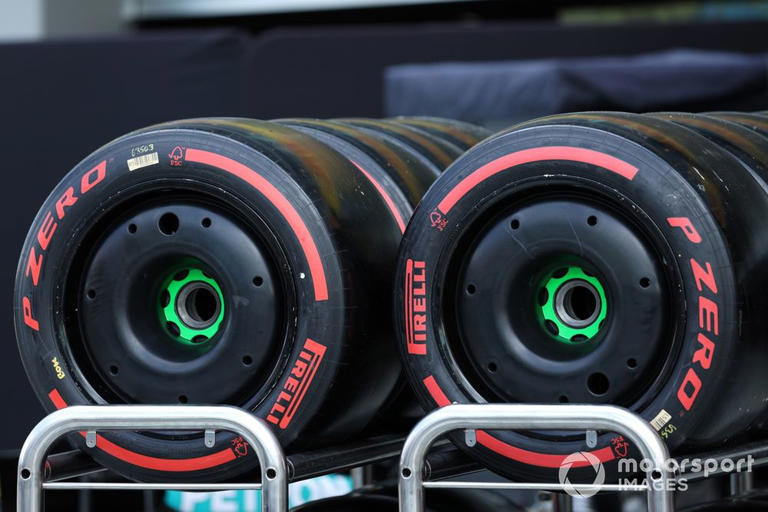
There is little doubt that striving for sustainability in motorsport has become increasingly important in recent years, with F1 itself aiming to be operating at net zero emissions by 2030.
Pirelli supplied teams with a total of 8,016 sets of tyres throughout last year and has also taken seriously the challenge of reducing its own footprint. The achievement of earning FSC-certified status is a huge accolade as part of that journey.
F1 still faces a challenge of using tyres in a more efficient way, since more than 20% of the slick tyres provided by Pirelli in 2024 were either used for a maximum of three laps or not used at all.
For the first time, all of the tyres supplied in the championship - and until at least 2027 - were stamped with the FSC-certified logo, meaning every single circle of rubber met with the Forest Stewardship Council’s strict standards for sustainable forestry.
“The introduction of FSC certification for the natural rubber component in Pirelli’s Formula 1 tyres, which also covered those for F2 and F3, represented a significant milestone in Pirelli’s journey towards sustainability,” Isola told Autosport.
“There were no changes to the production process itself and from a technical and performance standpoint, the certification was seamless. However, adhering to FSC standards required a complete revision of the natural rubber supply chain.
“This involved implementing rigorous traceability systems to ensure that the natural rubber used comes exclusively from FSC-certified forests, which are managed sustainably.
“Visibly, the only difference was the addition of the distinctive FSC logo on the tyre.”
As well as ensuring sustainable forestry is in place at the beginning of the process, Pirelli is also improving production methods to further its green drive.
“In motorsport activities, FSC certification, as well as the use of recycled tyres to produce secondary raw materials, is part of a series of initiatives that Pirelli has been pursuing for several years in terms of sustainability,” explains Isola.
“Production also follows strict criteria: the electricity used comes exclusively from certified renewable sources, further reducing environmental impact.
“Through virtual design, Pirelli has revolutionised the development process, reducing not only the time needed to create new solutions but also the number of prototypes produced, thus limiting material usage.”
Once produced, the tyres are shipped – rather than flown – to as many rounds on the F1 calendar as possible to reduce freight consumption, before becoming an integral part of every race weekend.
But the progress made by Pirelli does not end when it hands the product over to the teams.
“After each event, all the tyres used during F1, F2, F3, and F1 Academy race weekends are recovered and 100% recycled,” added Isola.

